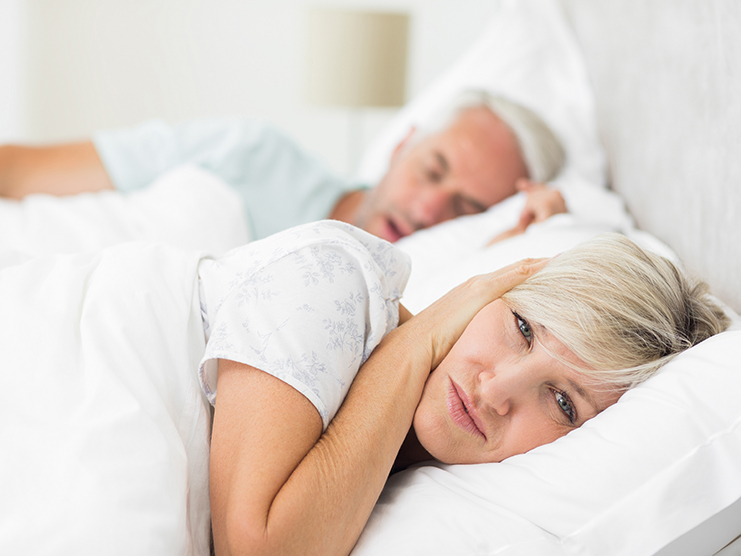Snoring and sleep apnea

The Greek word "apnea" literally means "without breath." Obstructive Sleep Apnea affects 1 in 10 people moderately and 1 in 100 severely. Due to their sleep being disrupted and restless, these people often feel tired and drowsy all day long.
What causes Snoring?
Snoring occurs when you fall asleep and the lower jaw drops backwards when the muscles relax. The airway is narrowed and partially obstructs the flow of air. Large tonsils, a long soft palate and uvula and excess fat deposits contribute to airway narrowing. As the air passes through these obstructions, these structures vibrate producing the snoring sound.
Symptoms and effects of sleep apnea can include occasional snoring, disrupted sleep, low blood-oxygen levels, momentary loss of breathing, and excessive daytime drowsiness and tiredness.
What causes Sleep Apnea?
Narrowing airway passages can cause Obstructive Sleep Apnea. Muscles relax during sleep. When the muscles relax too much during sleep, the tongue is sucked against the back of the throat causing airflow to stop. The oxygen level in the brain becomes low enough to awaken the sleeper partially.
The obstruction in the throat clears and the flow of air starts again (usually with a loud gasp). This is called apnea. Some patients experience up to 300 apnea episodes each night. Severe cases may have up to 700 per night.
The Sleep Apnea/Snoring Appliance
There are several different oral appliances available to treat snoring and Sleep Apnea, but they are all based on the principle of preventing the lower jaw from dropping backwards and the tongue obstructing the airways. Oral appliances have several advantages over other forms of therapy. They are comfortable to wear, and easy to care for. Treatment is reversible and non-invasive.
The Sleep Apnea/Snoring Appliance is made up of 2 custom-made mouthguards, connected by either plastic or metal connectors. They fit over the teeth and are worn while sleeping. The device works by moving the lower jaw and tongue forward and opening the airway in the back of the throat to let air flow freely.
